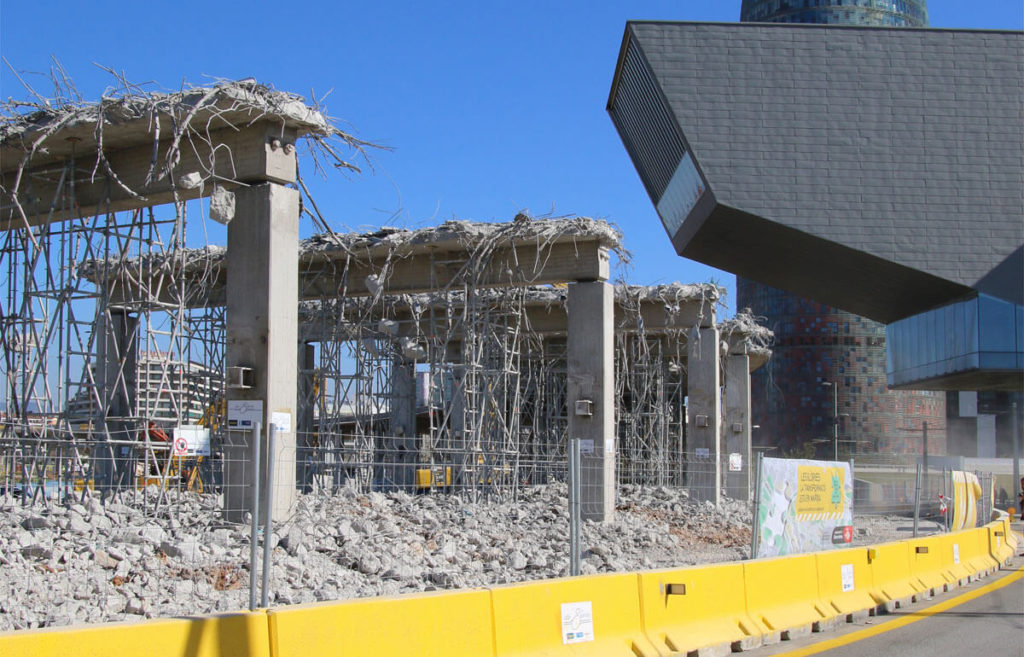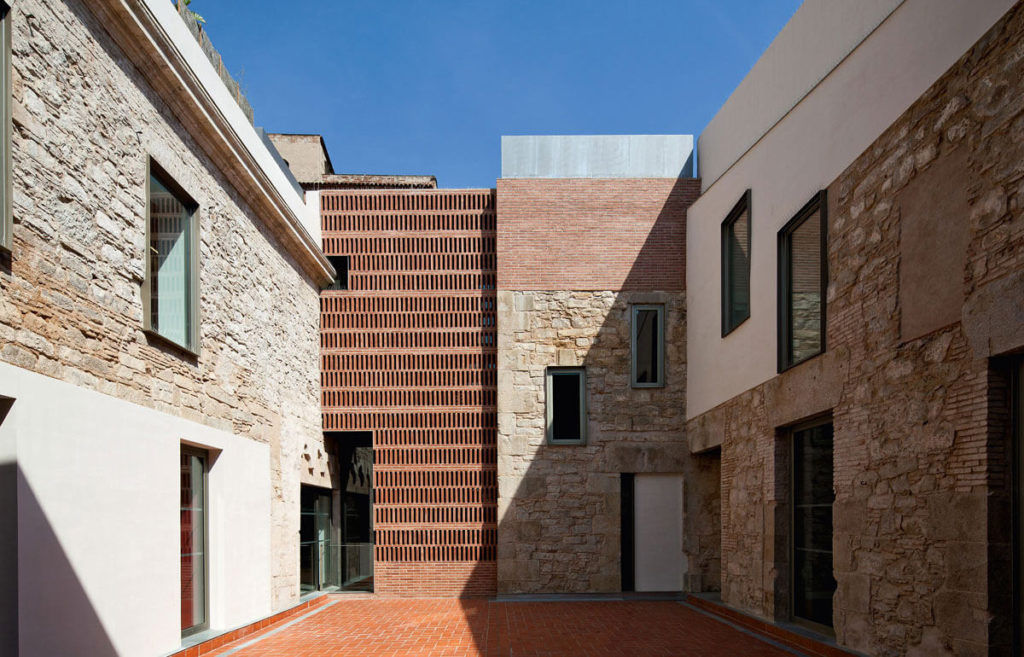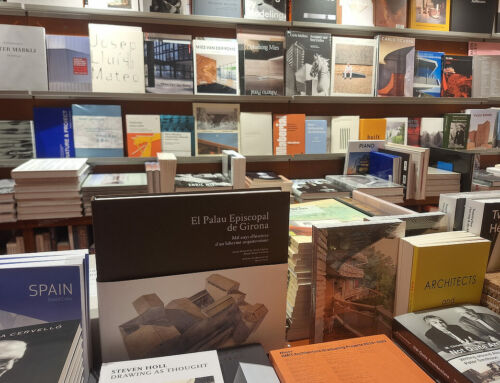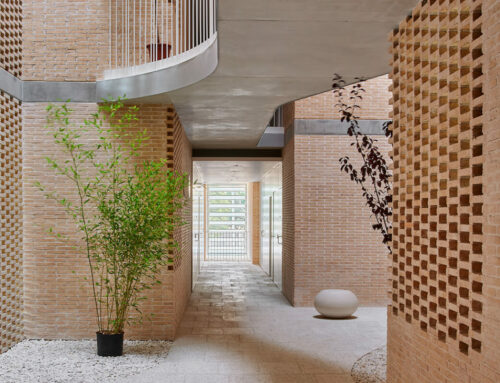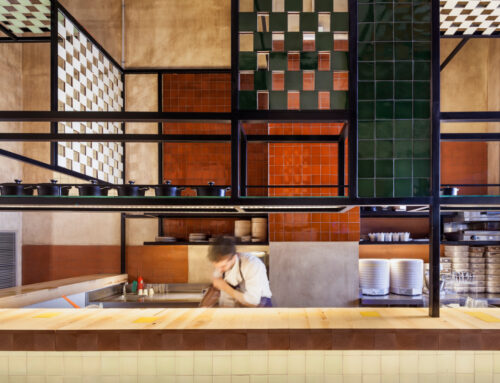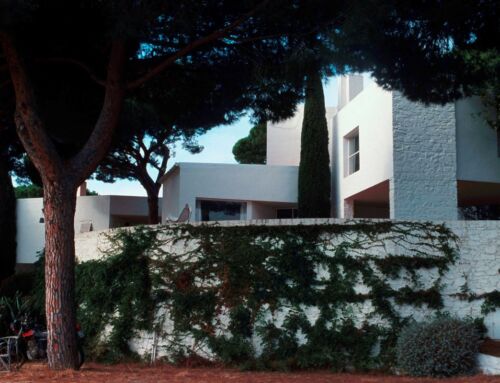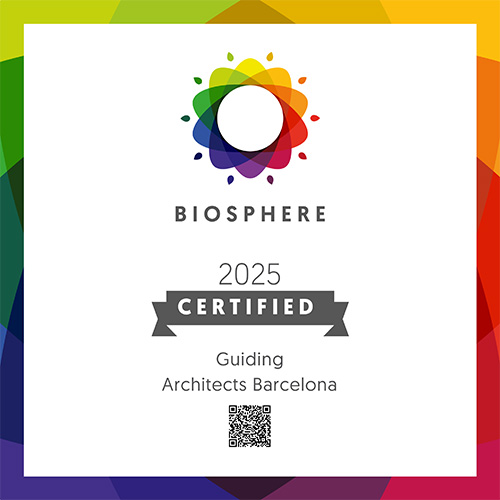Tricentenari 1714
The National Day of Catalonia, La Diada Nacional, is celebrated every 11th of September. It commemorates the surrender of Barcelona to the Bourbon monarchy on September 11th, 1714, and the loss of Catalonia’s political freedom in the wake of the Spanish Succession War. This year Catalonia is celebrating the 300th anniversary of its defeat: El Tricentenari. Architecture is an essential part of the cultural identity of a society and a mirror when it comes to social and political ideologies and therefore plays a central role within Barcelona’s year-long tercentenary celebrations. We decided to join the commemorations and make the historic anniversary the main topic of our 2014 summer newsletter. You are invited to take a short trip to the past, present and future of Barcelona.
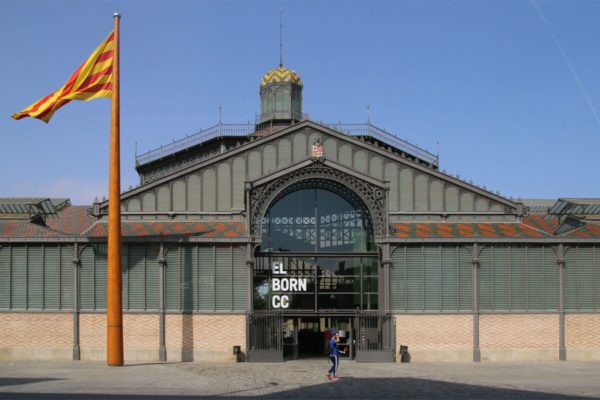
El Born Centre de Cultura i Memòria
El Born – The Catalan «Ground Zero»
The economic center of the medieval town was situated in what is today considered one of Barcelona’s trendiest neighborhoods, El Born. After the siege and fall of the city in 1714, a major part of the district was demolished to make way for a massive, no longer existing, citadel used by the Bourbon dynasty to keep the citizens under military control. Back then, Barcelona lost about one-fifth of its residential buildings, and many residents were forced to relocate elsewhere. In February 2002, restoration and conversion works on the old market Mercat del Born unearthed the remains of some of the townhouses destroyed 300 years ago, returning an important fragment of Catalan history that had been thought lost forever.
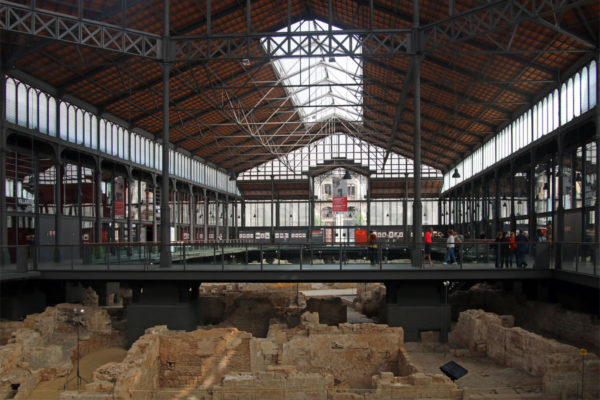
Jaciment Arqueològic El Born Centre de Cultura i Memòria
El Born Centre Cultural – Staged History
Completed in 1876 by Josep Fontserè i Mestres, the Mercat del Born was the first covered market throughout the Iberian peninsula that followed the example of French wrought iron constructions. After its closure in 1977, the municipality decided to convert the historic building into the Provincial Library of Barcelona, but the archaeological finds literally ruined the project. Carried out by local architects Enric Sòria and Rafael de Cáceres Zurita, the new project integrates the remains of the medieval town into the market hall. A bridge-like structure allows the historical site to be publicly accessible. Thus, the politically charged ruins do not only constitute the centerpiece of the new cultural center, but have also become an integral part of the surrounding urban fabric. El Born Cultural Centre opened its doors to the public on September 11th, 2013, and serves as the home venue of the tercentenary until September 11th, 2014.
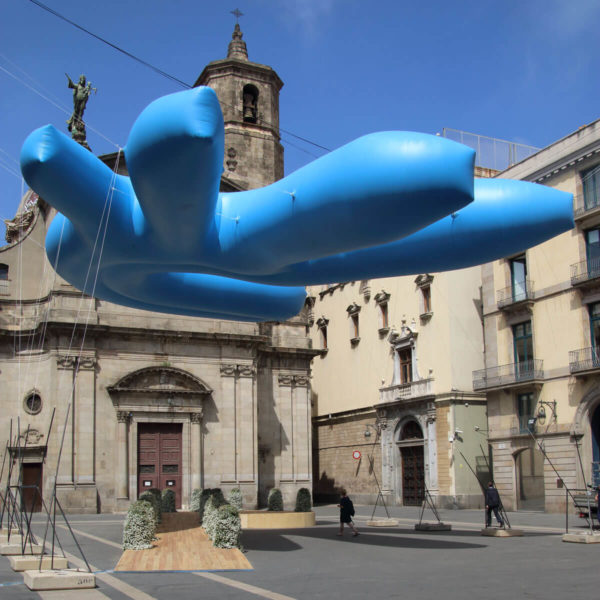
Instal·lació «Democràcia», Plaça de la Mercè
BCN RE.SET – Back to the Present
On the occasion of the commemorative year, the Barcelona City Council invited six international architectural practices to create temporary site-specific installations for several public spots across the old town. All architectural interventions were developed in close cooperation with Barcelona’s leading architecture and design schools and revolve around the concepts of identity, freedom and democracy, among others. The resulting urban itinerary of ephemeral architecture can be visited during the summer months, and will be removed after September 11th, 2014. BCN RE.SET has been coordinated by local architect Benedetta Tagliabue (EMBT), and, beside her own work, comprises installations of Odile Decq, Peter Cook & Yael Reisner, Grafton Architects, ETH Zürich & Urban-Think Tank, Anupama Kundoo und URBANUS.
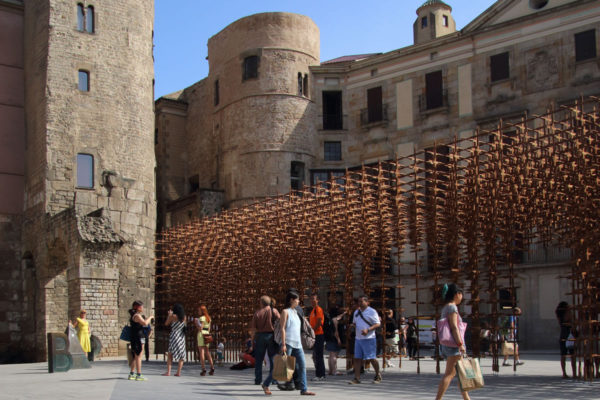
Instal·lació «Identitat», Plaça Nova
BCN RE.SET – Postscript
The modular bamboo structure erected in the square next to the Cathedral, Plaça Nova, has been designed by the Chinese architecture collective URBANUS and developed in dialogue with students of the local School of Architecture La Salle. Linked to the theme of identity, the construction not only reminds visitors of the old Roman aqueduct that once stood there, but also hints at traditional Catalan vaulting techniques. Our GA Barcelona team associate Josep Ferrando, who also works as assistant professor at La Salle, took an active role in the construction of the pavilion. We are therefore particularly thrilled by the project’s positive outcome.
Tricentenari 1714
The National Day of Catalonia, La Diada Nacional, is celebrated every 11th of September. It commemorates the surrender of Barcelona to the Bourbon monarchy on September 11th, 1714, and the loss of Catalonia’s political freedom in the wake of the Spanish Succession War. This year Catalonia is celebrating the 300th anniversary of its defeat: El Tricentenari. Architecture is an essential part of the cultural identity of a society and a mirror when it comes to social and political ideologies and therefore plays a central role within Barcelona’s year-long tercentenary celebrations. We decided to join the commemorations and make the historic anniversary the main topic of our 2014 summer newsletter. You are invited to take a short trip to the past, present and future of Barcelona.

El Born Centre de Cultura i Memòria
El Born – The Catalan «Ground Zero»
The economic center of the medieval town was situated in what is today considered one of Barcelona’s trendiest neighborhoods, El Born. After the siege and fall of the city in 1714, a major part of the district was demolished to make way for a massive, no longer existing, citadel used by the Bourbon dynasty to keep the citizens under military control. Back then, Barcelona lost about one-fifth of its residential buildings, and many residents were forced to relocate elsewhere. In February 2002, restoration and conversion works on the old market Mercat del Born unearthed the remains of some of the townhouses destroyed 300 years ago, returning an important fragment of Catalan history that had been thought lost forever.

Jaciment Arqueològic El Born Centre de Cultura i Memòria
El Born Centre Cultural – Staged History
Completed in 1876 by Josep Fontserè i Mestres, the Mercat del Born was the first covered market throughout the Iberian peninsula that followed the example of French wrought iron constructions. After its closure in 1977, the municipality decided to convert the historic building into the Provincial Library of Barcelona, but the archaeological finds literally ruined the project. Carried out by local architects Enric Sòria and Rafael de Cáceres Zurita, the new project integrates the remains of the medieval town into the market hall. A bridge-like structure allows the historical site to be publicly accessible. Thus, the politically charged ruins do not only constitute the centerpiece of the new cultural center, but have also become an integral part of the surrounding urban fabric. El Born Cultural Centre opened its doors to the public on September 11th, 2013, and serves as the home venue of the tercentenary until September 11th, 2014.

Instal·lació «Democràcia», Plaça de la Mercè
BCN RE.SET – Back to the Present
On the occasion of the commemorative year, the Barcelona City Council invited six international architectural practices to create temporary site-specific installations for several public spots across the old town. All architectural interventions were developed in close cooperation with Barcelona’s leading architecture and design schools and revolve around the concepts of identity, freedom and democracy, among others. The resulting urban itinerary of ephemeral architecture can be visited during the summer months, and will be removed after September 11th, 2014. BCN RE.SET has been coordinated by local architect Benedetta Tagliabue (EMBT), and, beside her own work, comprises installations of Odile Decq, Peter Cook & Yael Reisner, Grafton Architects, ETH Zürich & Urban-Think Tank, Anupama Kundoo und URBANUS.

Instal·lació «Identitat», Plaça Nova
BCN RE.SET – Postscript
The modular bamboo structure erected in the square next to the Cathedral, Plaça Nova, has been designed by the Chinese architecture collective URBANUS and developed in dialogue with students of the local School of Architecture La Salle. Linked to the theme of identity, the construction not only reminds visitors of the old Roman aqueduct that once stood there, but also hints at traditional Catalan vaulting techniques. Our GA Barcelona team associate Josep Ferrando, who also works as assistant professor at La Salle, took an active role in the construction of the pavilion. We are therefore particularly thrilled by the project’s positive outcome.




